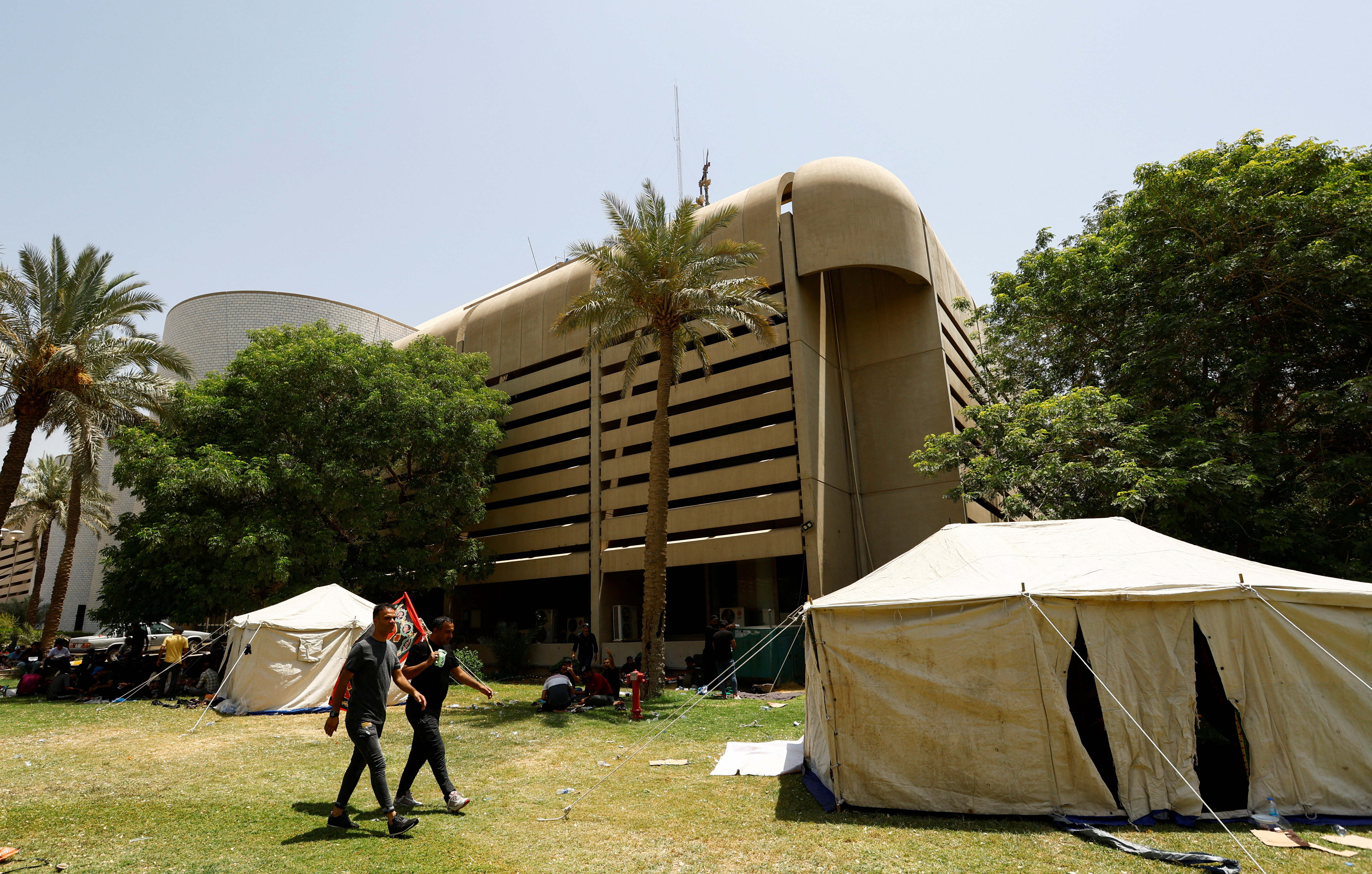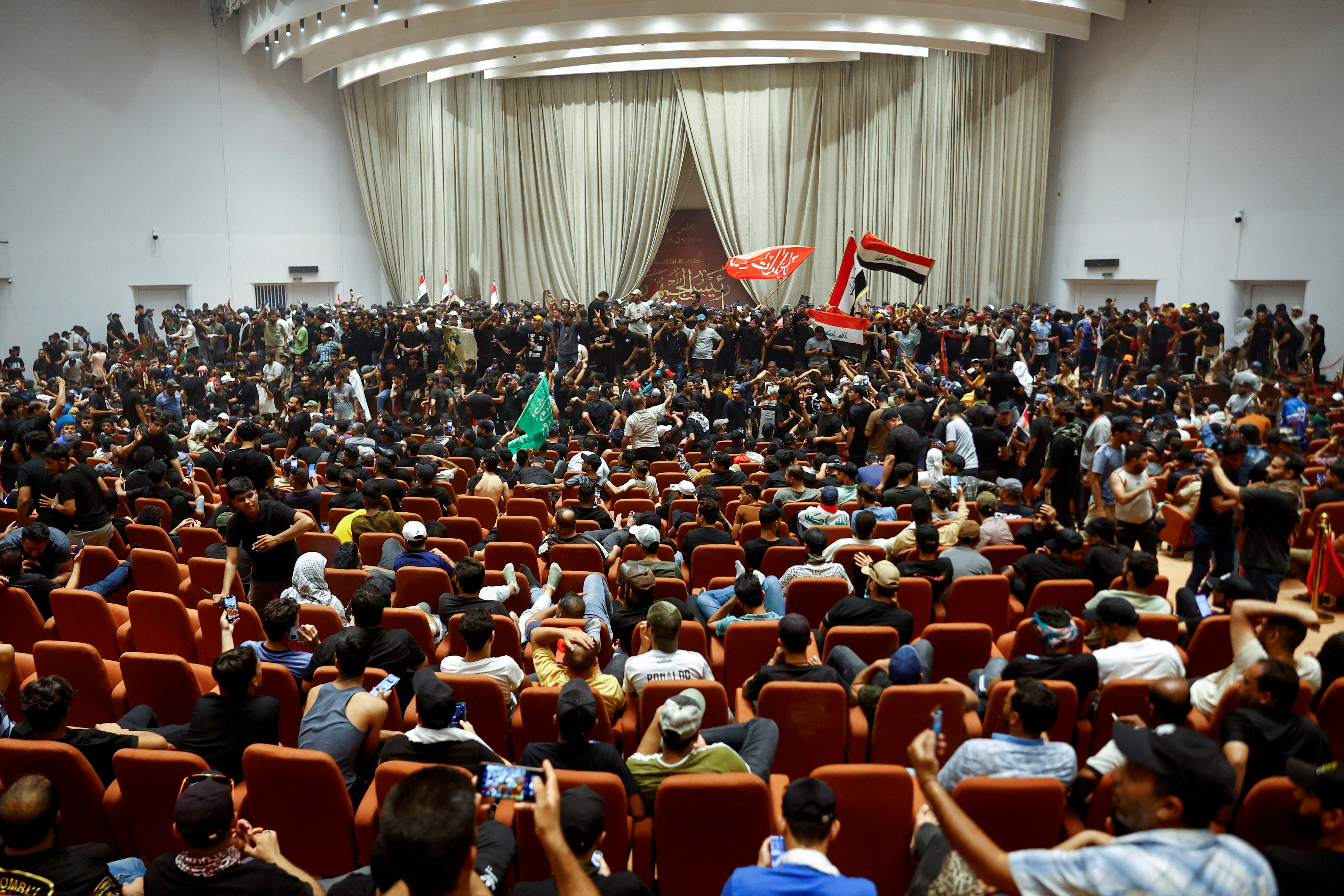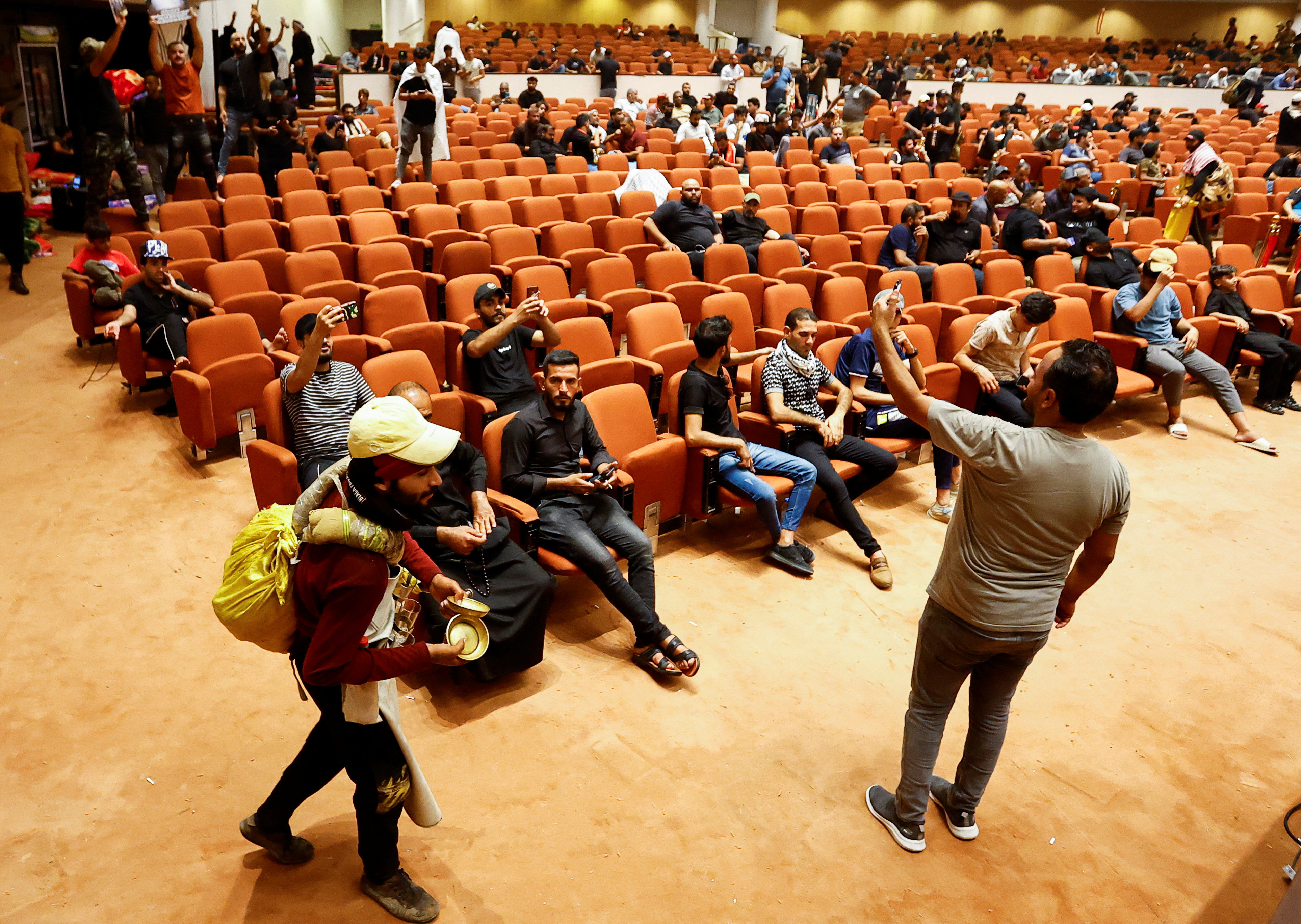"Rigorously managing the environment" is particularly important, experts say.
BySasha Pezenik and Sony Salzman
July 30, 2022
Some of the operational deficiencies that helped trigger the massive shutdown of Abbott Nutrition's infant formula plant earlier this year have also been found at some other companies' factories, according to an ABC News investigation of some of the other formula makers that have stepped in to help fill empty American grocery shelves in the midst of the critical nationwide shortage.
The pathogen that prompted those concerns, Cronobacter sakazakii, can be widely found in the environment -- but in infants, it can be deadly.
Its discovery inside Abbott's Sturgis, Michigan, plant prompted a massive voluntary formula recall in February, after four babies who had consumed Abbott's formula contracted a Cronobacter infection. Two of the infants subsequently died, although Abbott maintains there has not been conclusive evidence that its formula caused the infant illnesses, since none of the Cronobacter strains found at their plant matched the two samples genetically sequenced from the sickened infants.
Ultimately, it was the combined findings of Cronobacter inside Abbott's plant -- along with a pattern of serious operational deficiencies and consumer complaints -- which led to its closure.
Abbott's shutdown ricocheted across the country, exacerbating the supply shortage and forcing families to scramble for alternatives in the hyper-concentrated formula market. In the wake of Abbott's recall, other companies jumped in to ramp up manufacturing to help mitigate the strain.
Yet within the last five years, those companies -- Reckitt's Mead Johnson, Gerber, and Perrigo's PBM -- have also not been immune to operational and even contamination-related concerns.
Nearly a decade's worth of FDA inspections obtained through the regulatory intelligence company Redica Systems and reviewed by ABC News have found the presence of Cronobacter in environmental sampling, in critical and high-hygiene areas, and even in finished product from some of these formula manufacturers' American plants.
In some cases, investigators found crucial equipment in a state that could nurture the spread of potentially dangerous pathogens, according to inspection reports.
'Rigorously managing the environment'
Cronobacter is exceptionally hardy, experts say. It is also "fairly common" in places like soil -- but that's exactly why "rigorously managing the environment" in formula factories and "taking proactive steps to prevent pathogens from creeping into our foods" are particularly important, food safety expert Scott Faber told ABC News.
Akin to a restaurant health inspector, the FDA performs no-notice inspections of U.S. manufacturing facilities to ensure companies are complying with manufacturing and cleanliness standards; they also perform inspections when alerted by a company that product contamination has been found -- or when consumer complaints prompt a for-cause probe into whether the company is upholding an acceptable standard.
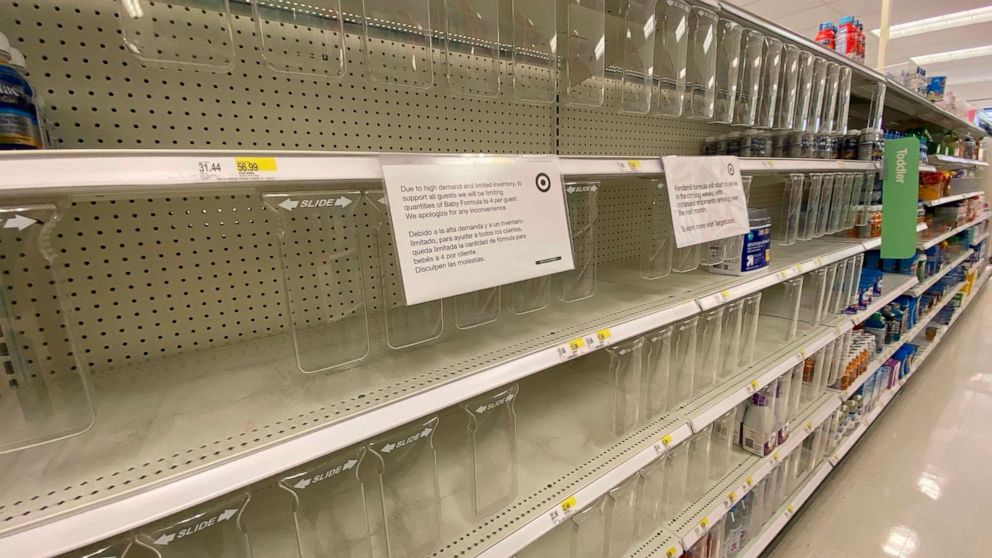
Normally fully stocked shelves of baby forumala are empty in a Target store in Queens, New York, June 23, 2022.
Universal Images Group via Getty Images, FILE
ABC News has reviewed FDA inspection documents for the three other domestic companies which, along with Abbott, have been responsible for roughly 90% of the country's formula market.
The right set of circumstances can compound a perfect storm of risk factors for potentially dangerous pathogens to survive, experts say -- and that's especially worrisome when a contaminant like Cronobacter lurks where food is made for babies, who are among those most vulnerable to that germ.
"Especially for sensitive populations, that quality control is so important. You don't want contamination to rise to a level where it becomes a problem," Dr. Amy Edwards, a pediatrician and associate medical director for infection control at UH Rainbow Babies & Children's Hospital in Ohio, told ABC News. "That's why inspections are meant to be incredibly invasive -- we have to get close enough to zero contamination levels to be safe."
Mead Johnson
In August 2021, FDA investigators made a routine visit to Mead Johnson's plant in Evansville, Indiana, where it has operated for more than a century. An inspection report notifying the company's management of objectionable conditions, called a Form 483, was issued, after investigators found the plant's data wasn't recorded frequently enough to ensure proper sterility of their product.
FDA investigators said that company records indicated Cronobacter was found in one of the plant's rooms, and that the area was subsequently sanitized. A plant operator was observed not washing his hands between glove changes, and not changing his gloves between touching non-food and food contact surfaces.
The employee was subsequently retrained, Mead Johnson told the FDA, according to inspection documents. But it was not the first time investigators had flagged concerns at one of Mead Johnson's plants.
In late 2017, seven investigators visited Mead Johnson's plant in Zeeland, Michigan, after the company had alerted the FDA that two finished batches of Enfamil formula -- batches that had already been exported from the country -- tested positive for Cronobacter. An FDA inspection revealed that Cronobacter had been found "in critical and high hygiene areas of the processing environment on 26 occasions" between mid-January and late August of 2017, documents obtained by ABC News show.
FDA investigators also said they found Cronobacter specifically in areas that risked leading to "potential contamination" of "food contact surfaces."
The potential problems the FDA discovered at the plant were addressed in time for later inspections -- but food safety experts told ABC News these issues can become a serious problem if not immediately dealt with.
"Cronobacter is an environmental pathogen -- it's everywhere," food safety attorney Bill Marler said. "But it's really, really bad to have it in infant formula."
Mead Johnson's plant had "multiple wall leaks," nonconformity reports reviewed by the FDA said, as well as "equipment condensation" in areas where positive Cronobacter samples were later found.
"Leaks are the bane of infection control," Edwards said. "Water is life; if you're not controlling your water, then you are not controlling your bacteria."
The Zeeland facility submitted a corrective action plan, promising "increased frequency of cleaning the areas where positive results were identified, evaluation and inspection of equipment" and "repairs to equipment and the facility as needed."
FDA investigators followed up with the Zeeland plant in spring 2018. The facility had retooled its sanitization procedures, implemented dryer inspections, and made repairs to flooring, water infiltration, and caulking.
Returning in March 2019, investigators noted the plant's environmental monitoring program had identified and mitigated several instances of Cronobacter in various areas of the plant.
In a statement to ABC News, Reckitt, of which Mead Johnson is a division, maintained that the company manufactures their formula "using the highest standards for quality and safety," adding that whenever the FDA finds an issue they "immediately develop and implement an action plan to address the issue."
Reckitt said they "regularly review and enhance" their facilities' manufacturing processes "and invest in new technologies and equipment," adding that their "robust operating protocols meet or exceed the highest regulatory standards," which they employed while "safely" increasing infant formula amid the shortage.
An FDA spokesperson, when asked for comment regarding their investigators' findings of Cronobacter at multiple formula companies' facilities, said the agency "takes its responsibility seriously" to ensure the rigorous safety of American foods, and that the agency is reexamining whether more can be done.
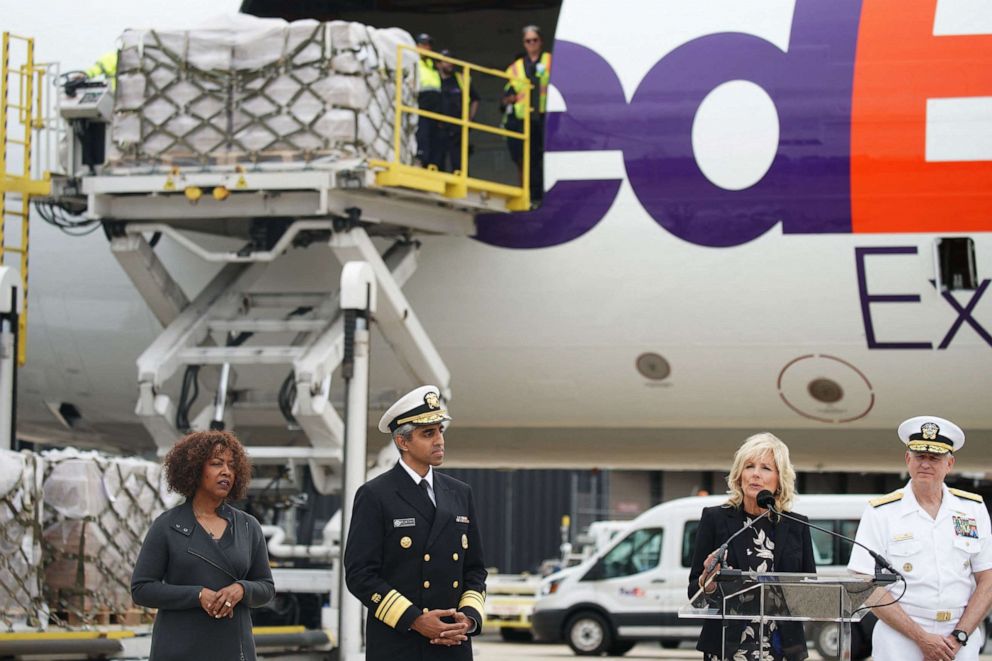
First Lady Jill Biden, joined by Surgeon General Vivek Murthy, delivers remarks after a shipment of infant formula, sent in through Operation Fly Formula, arrived at Dulles International Airport in Dulles, Va., May 25, 2022.
Stefani Reynolds/AFP via Getty Images
Based on a "close look at recent and historical findings" from inspections, the FDA spokesperson said, "We will be looking at what additional strategies could be employed to better prevent microbial contamination during the production of powdered infant formula," adding the agency is "conducting an evaluation" of their response to the formula crisis "to determine what additional steps should be taken to ensure the maximum effectiveness of agency programs and policies related to infant formula and medical food."
Nevertheless, said the spokesperson, "It is important to note that it's a firm's responsibility to ensure the consistent quality and safety of the products they produce."
"We are most interested in how aggressively a firm addresses and responds to potential contamination," the FDA spokesperson said.
Steven Lynn, the former director of the FDA's pharmaceutical Office of Manufacturing and Product Quality, told ABC News that manufacturers' oversight "must be robust to assure no adulterated product reaches the vulnerable infant population they serve."
"It sounds easy, but it's not," said Lynn, an expert on good manufacturing practices. "Problems can and do occur. That's a fact of life."
Lynn, who reviewed the inspection documents obtained by ABC News, noted that there appear to be "problematic similarities" among some of the formula manufacturers' lapses in quality control, including "issues with inadequate process controls, including cleaning, sampling and ultimately controlling the production environment to assure there is no microbial contamination," he said.
Lynn said that FDA investigators did what they were supposed to do: identify deficiencies for the companies to fix.
"The key is making sure the issues are thoroughly investigated, and then implementing robust solutions to correct and prevent them from reoccurring in the future," in order to ensure that "safe formula is on the market," Lynn said.
Gerber
In August 2021, FDA investigators made a routine visit to Nestlé Nutrition's Gateway facility in Eau Claire, Wisconsin, which makes Gerber products. They found "dirty scoops used during the previous production day" lying on a stainless steel table in one of the raw material rooms, and "debris" on the floor.
It was determined that some cleaning activities were resulting in water getting "trapped in cracks in the floor" and "onto equipment located on lower decks."
In addition, Cronobacter was detected in an in-process powder sample of infant formula.
The finished lot of that product was immediately destroyed.
FDA investigators discussed their findings and suggested remedies with management, but did not issue a Form 483 at that time, according to inspection documents reviewed by ABC News.
A Gerber spokesperson told ABC News that their infant formulas go through up to 500 quality and safety checks, "many of which are above and beyond regulatory requirements."
"If we find Cronobactor or any other contaminant in the product, that is when we take the most extreme reaction," Scott Fitz, Vice President of Technical & Production for Gerber told ABC News.
"All the product in that batch is blocked, and all the batches around that product are blocked," he said, adding that the company thoroughly investigates the contaminant's origins and destroys any impacted product.
"Given the sensitive consumer we're dealing with, we can't take the chance of it getting to shelf," Fitz said. "This isn't about regulation, it's about doing what's right."
PBM Nutritionals
After a routine visit in August 2019, the FDA issued a Form 483 identifying a cold storage temperature regulation deficiency at the Milton, Vermont, plant of PBM Nutritionals, a subsidiary of Perrigo, which makes store-brand formulas for retailers like Walmart and Amazon.
Investigators found that some of the facility's data was not specific enough "to ensure there is no significant growth of microorganisms of public health significance" in their storage tanks. Documents provided by the company to the FDA noted a recent roof leak had overwhelmed the drainage system, and that, upon inspection, environmental sample swabs tested positive for Cronobacter before additional cleaning.
In a statement to ABC News, Perrigo said they are "proud" of their compliance track record, adding that the Cronobacter within the plant had been found by their own self-monitoring, rather than by FDA investigators.
"Our facilities in Vermont and Ohio are in good regulatory standing and remain compliant with all FDA processes and procedures," they said.
Perrigo said they had hired independent experts "a few years ago" to "enhance" their manufacturing processes and protective measures. The company said the experts found their "aging equipment could lead to concerns in the future," so they invested approximately $110 million in improving formula plant quality, and hired an additional 100 quality and sanitation personnel.
Perrigo said that they had addressed the FDA's observation regarding cold storage.
"Our quality control process is a continuous improvement process, and any concerns found are promptly addressed," the company said.
"Everybody knows what the persistent problems are that cause bacterial contamination in product," said Marler, the food safety attorney. "It's cracks, water, old equipment. It's when companies stop realizing they're producing food that is going into the bodies of babies and they start thinking about it as a widget, as a commodity."
Patrick Stone, a former FDA investigator, says factories that make infant formula should be held to a higher quality-control standard than other mass market food products. But too often, he said, "it actually takes an outbreak or something to happen before people wake up and say .... 'Why is this happening?'"
Abbott Nutrition
After inspecting Abbott's Sturgis facility earlier this year, FDA chief Dr. Robert Califf described the "shocking" and "egregiously unsanitary conditions" investigators had found.
"Standing water; cracks in the key equipment that present the potential for bacterial contamination to persist, particularly in the presence of moisture; leaks on the roof; a previous citation for inadequate hand washing," Califf testified before Congress in May. "Many signs of a disappointing lack of attention to the culture of safety, in this product that is so essential to the lives of our most precious people."
Investigators discovered five strains of Cronobacter from environmental sampling of Abbott's plant, and Abbott ultimately agreed to shutter the facility and recall the formula.
Food safety experts ABC spoke with emphasized the importance of establishing -- and adhering to -- a proactive protocol for rooting out risk factors, before they snowball.
"You don't wait for the accident to happen before you build a stoplight," said Faber, the food safety expert. "You probe your factory for where pathogens could be lurking, and then adopt critical controls to eradicate them.
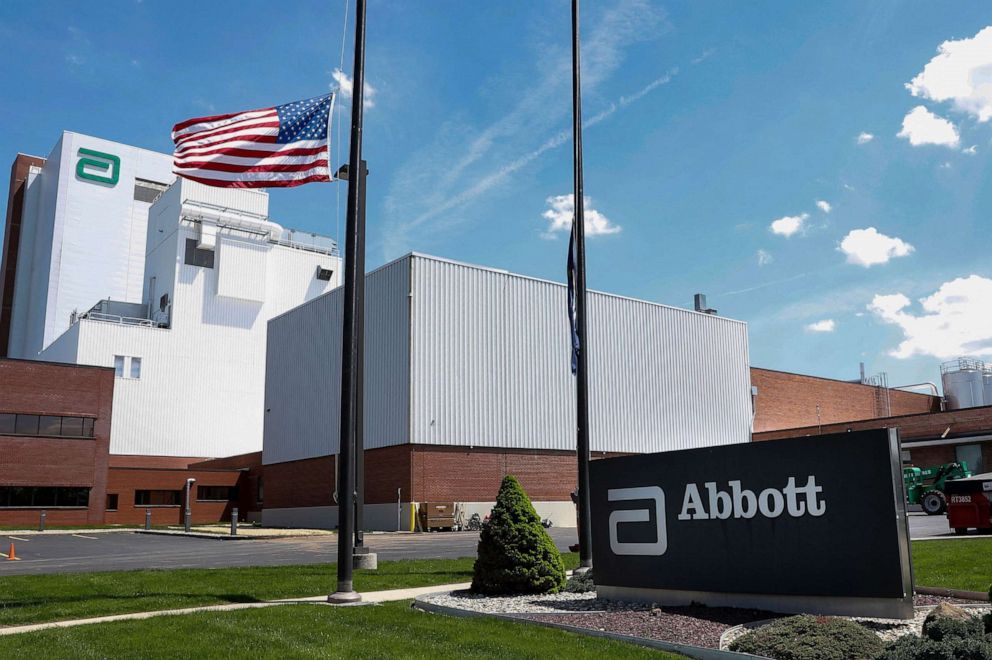
The Abbott manufacturing facility in Sturgis, Mich., May 13, 2022.
Jeff Kowalsky/AFP via Getty Images
"If we're seeing any of the conditions found at Sturgis in other plants, we need to ask whether that philosophy has been sufficiently embraced," he said.
"Abbott has a zero-tolerance policy for Cronobacter in our plants, which is why we took the steps we did at Sturgis," an Abbott spokesperson said. "Our highest priority is getting babies safe, quality formula they need."
Further complicating the matter is that Cronobacter infection is listed as a reportable illness by only one U.S. state: Minnesota, where the first of the four infants was reported infected after consuming Abbott's formula last September.
Because there are no national requirements that Cronobacter be reported, doctors and labs are not required to report cases to their local health department -- which leaves the FDA to rely on consumer complaints and health care providers for on-the-ground data regarding infections.
"Until you increase that oversight, you're going to limp from mini-outbreak to mini-outbreak," Marler said.
A 'stringent enough' system?
In August 2017, a few months before the FDA found Cronobacter inside Mead Johnson's Zeeland plant, a two-week old infant from Illinois was declared brain dead after being diagnosed with a Cronobacter infection. The infant had consumed "multiple lots of Enfamil Newborn Premium ready-to-feed liquid milk product at the hospital, and some product was sent home with the parents," FDA inspection reports say.
But FDA sampling of the available formula was negative for Cronobacter.
Reckitt told ABC News they "cooperate fully with the FDA to investigate consumer complaints," underscoring that their formula had never conclusively been proven as the cause of an illness.
In the case of Abbott, too, no conclusive causation has been proven between the Cronobacter found at the Sturgis plant and infants' illness or death. Nevertheless, FDA chief Califf noted in congressional testimony that "we cannot rule it out either, as the confluence of events is highly unusual. There is no dispute that the facility was unacceptably unsanitary."
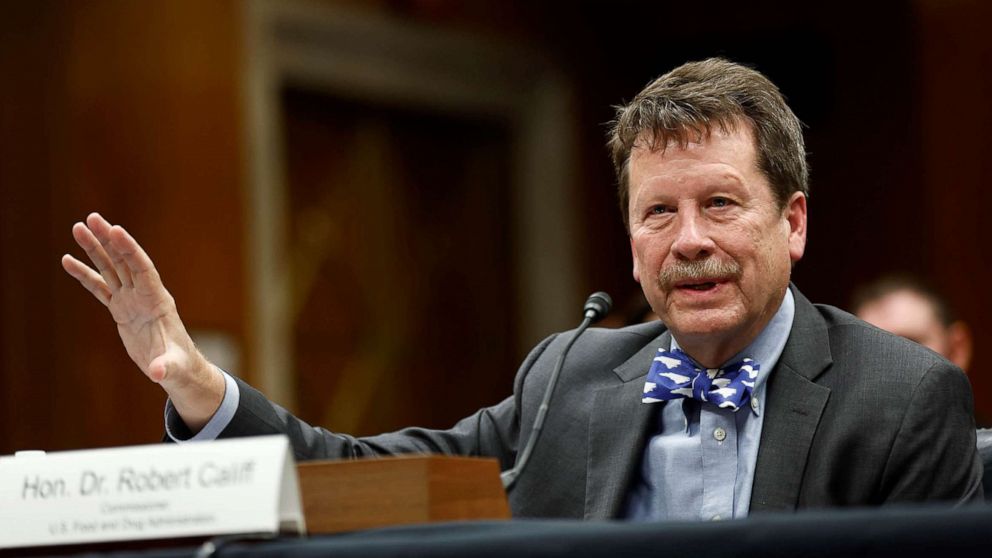
Food and Drug Administration Commissioner Robert Califf attends a hearing in Washington, April 18, 2022.
Xinhua News Agency via Getty Images, FILE
"There is some room for human error, but not for persistent human error," said Edwards. the pediatrician. "You have to have your process in place. And you have to have a process for monitoring your process to make sure it's always being followed."
When several controls fail at once, it risks prompting an unfortunate domino effect and "raises important questions about whether our current regulatory system is stringent enough," Faber said.
The FDA spokesperson told ABC News that the agency is assessing whether their annual surveillance inspections of formula facilities should include more environmental sampling going forward, albeit in a way that "minimizes any disruptions to the supply chain."
In June, ABC News was first to report that the Health and Human Services' Office of Inspector General had launched an audit into how the FDA responded leading up to the recall and closure of Abbott's Sturgis plant.
The CDC says Cronobacter infections are rare, but serious in infants -- noting that powdered formula can be contaminated at a processing facility, or at home. Because Cronobacter can survive so well -- on kitchen counters, on sinks, or in a manufacturing plant -- the CDC recommends that families using formula wash hands frequently around infants, thoroughly clean bottles, and safely store any powdered formula, or, if possible, use liquid formula.
"There are babies out there whose lives depend on formula. So what happens when the thing that you're giving your baby is actually the thing that makes them sick?" Edwards said. "That is incredibly scary. For parents, for all of us."
ABC News' Eric M. Strauss contributed to this report.
